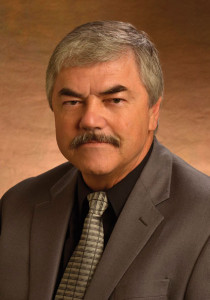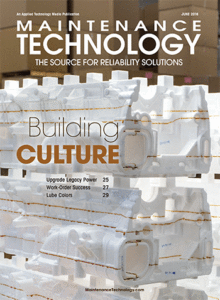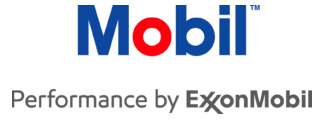 By Dr. Klaus M. Blache, Univ. of Tennessee, Reliability & Maintainability Center
By Dr. Klaus M. Blache, Univ. of Tennessee, Reliability & Maintainability Center
Reliability-centered maintenance (RCM) is a process designed to establish the safe minimum level of maintenance for each piece of machinery/equipment in a facility. It’s concerned with maintaining functionality of individual components in an entire system. Many companies are aspiring to do it. Others are doing it partially. A smaller number do it regularly. Some start and then stop. What’s going on?
While there are superficial variations of the methodology to differentiate for marketing and some differences between full or classical RCM and shortened versions, should RCM really stand for “resource-consuming monster?” Let’s first look at some key historical documents.
As summed up on the back cover of John Moubray’s 1997 RCM2 book Reliability-Centered Maintenance, (Industrial Press, New York), RCM is “a process used to determine systematically and scientifically what must be done to ensure that physical assets continue to do what their users want them to do.” RCM2 knowledge came from early studies in the military.
One of the most referenced documents is the 1978 U.S. Department of Defense AD-A066579 Reliability-Centered Maintenance report by Stanley Nolan and Howard Heap (both with United Airlines). Their study generated the six failure curves you see in every RCM-related presentation.
Showing that age-related failures account for only about 11% of all failures drives much of the optimization of maintenance tasking. In 1996, the NAVAIR 00-25-403 report introduced Guidelines for the Naval Aviation Reliability-Centered Maintenance Process.
I’m personally familiar with SAE JA1011 (1999), which provides the minimum criteria for what should be in an RCM process. My reliability and maintenance team at General Motors was involved with Ford, Chrysler, Boeing, Caterpillar, Pratt & Whitney, Rockwell International, and many other contributing organizations to create a reliability and maintainability guideline. The result was a 1993 publication by the National Center of Manufacturing Sciences Inc., Ann Arbor, MI, and the Society of Automotive Engineers (SAE), Warrendale, PA. It was titled Reliability and Maintainability Guideline for Manufacturing Machinery and Equipment (publication M-110).
Regardless of the RCM process you plan to use, know that it will consume scarce operational and support resources. It’s important to determine what time is available and put it in your business plan.
An RCM analysis, among other things, requires an FMEA (failure modes and effects analysis) and concludes with PM optimization (selecting the best failure-avoidance strategy). Preventive maintenance (PM) optimization is a streamlined methodology that identifies failure modes and develops PM tasks to minimize/avoid failures.
Based on your improvement needs, allocate adequate time for each level of RCM. For critical and complex issues, do full RCM. For moderate issues, do an overall FMEA for similar equipment/components. For less-critical areas, just doing a PM optimization will be a good start. This approach can free up resources to do more crucial problem solving and predictive and preventive tasks. Identifying the annual total time available can help prioritize the levels of analysis to do.
I’ve found that if sufficient time is spent preparing for classical RCM, boundaries are clearly identified, and scope-creep is managed during the event, full RCM doesn’t take much longer than shortened versions. Even simple things done prior to an RCM event, i.e., completing, with participant input, a draft of the three ranking scales (severity of problem, likelihood of occurrence, and likelihood of detection) can save time. If you start RCM/FMEAs without an implementation strategy, the resource-consuming monster will swallow you.
Many RCM-process variations can work if they follow SAE JA1011 and are conducted under the proper circumstances. You must do adequate readiness investigation and preparation, however, to understand the limits, risk, and consequences of your chosen path. Used correctly, RCM is a great tool. MT
Based in Knoxville, Klaus M. Blache is director of the Reliability & Maintainability Center at the Univ. of Tennessee (UTK), and a research professor in the College of Engineering. Contact him directly at [email protected].



